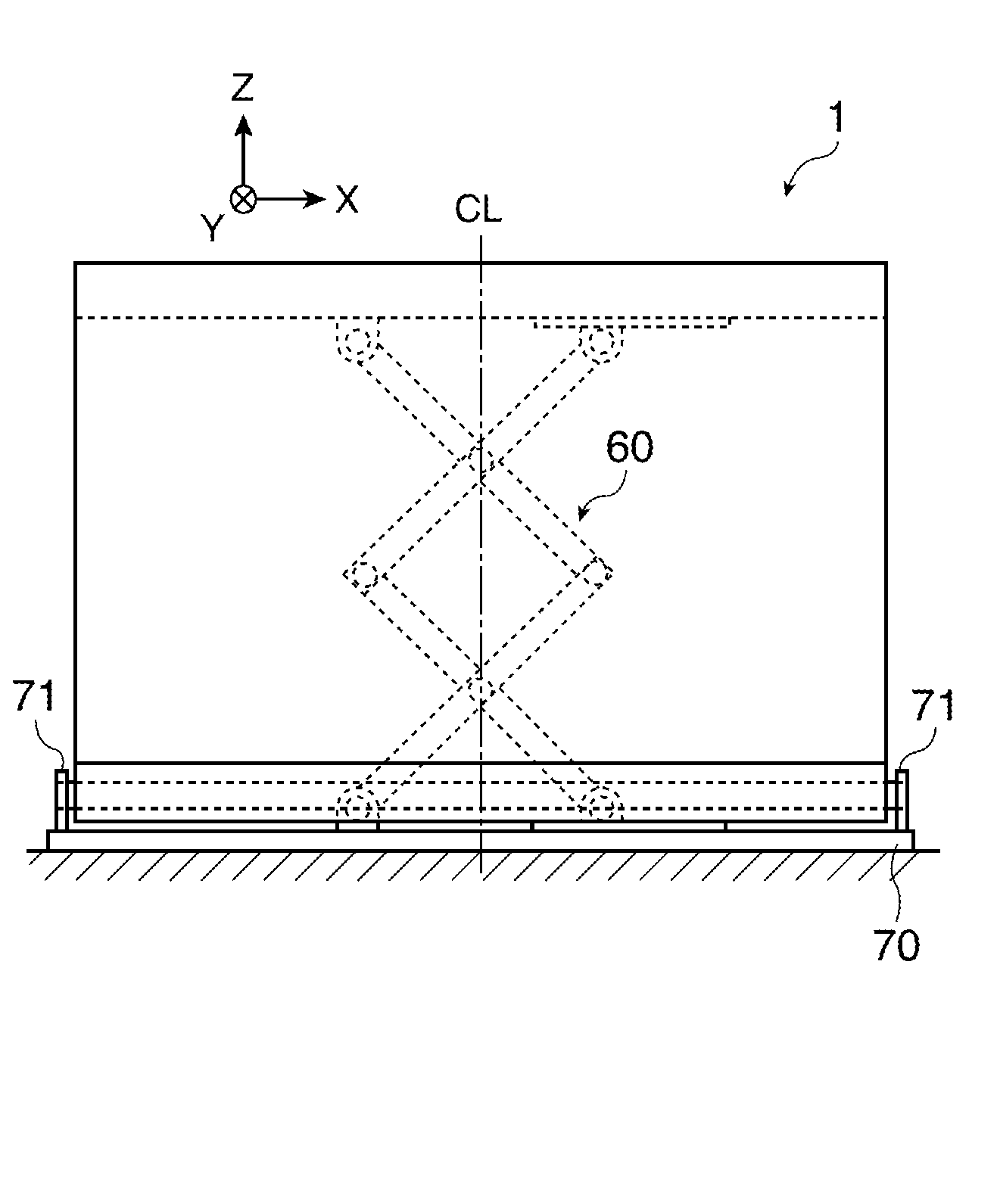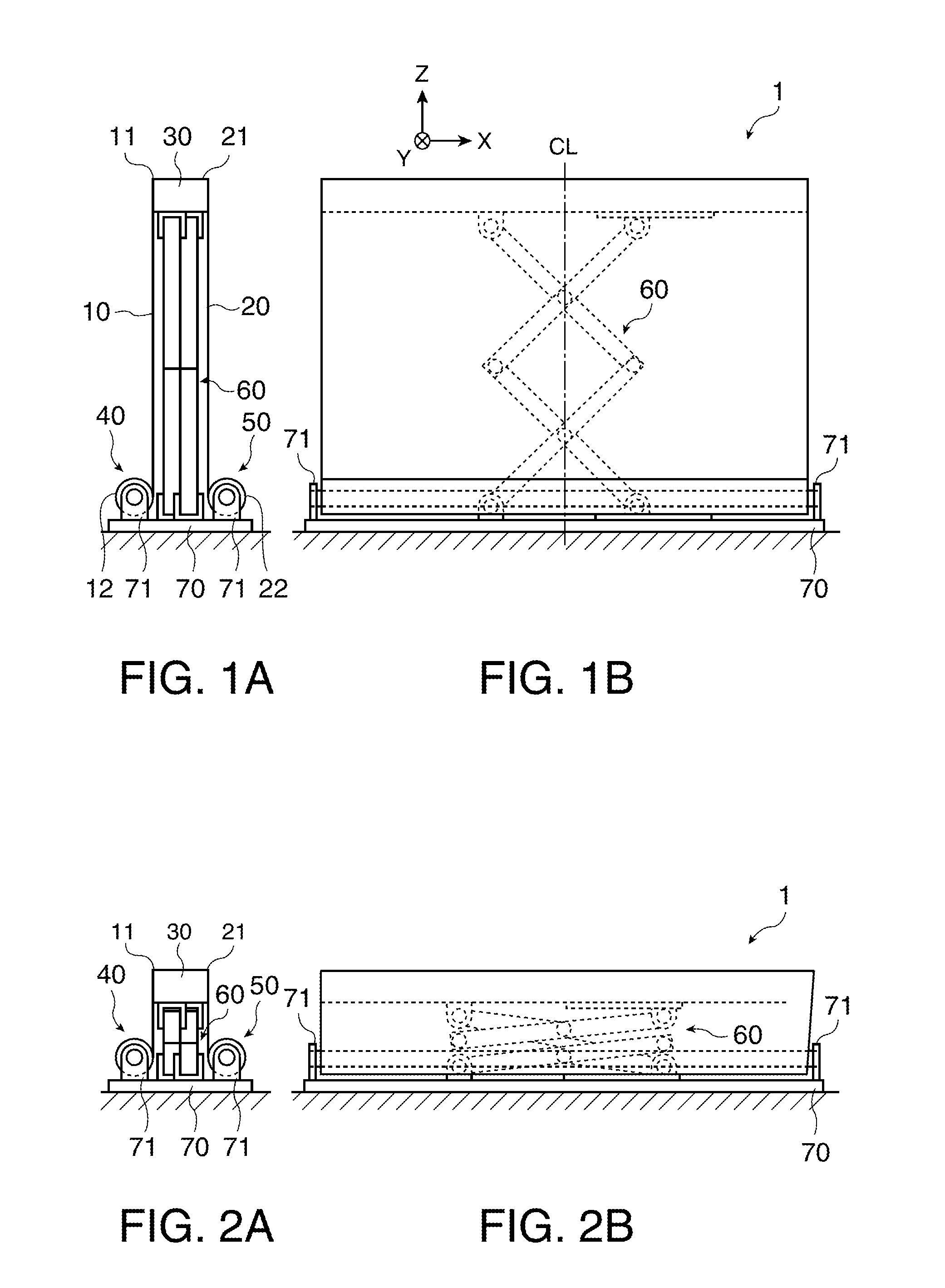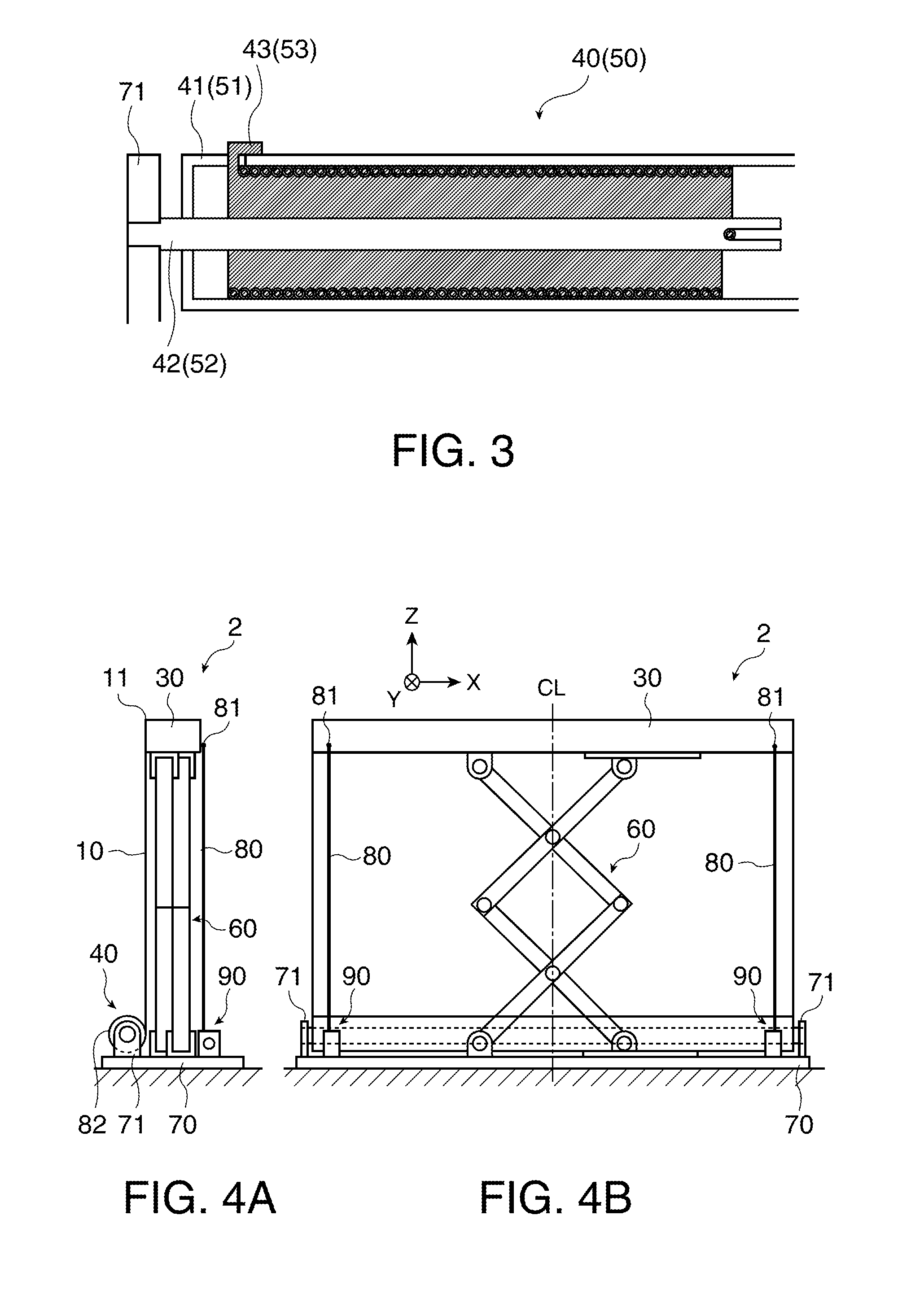Screen unit
a technology of screen unit and screen, which is applied in the field of screen unit, can solve the problems of deformation of images, difficult to maintain the vertical posture and the force on the front surface side of the elevating mechanism is not balanced against the force on the rear surface side,
- Summary
- Abstract
- Description
- Claims
- Application Information
AI Technical Summary
Benefits of technology
Problems solved by technology
Method used
Image
Examples
first embodiment
[0057]A screen unit according to a first embodiment is now described with reference to FIGS. 1A and 1B, 2A and 2B, and 3. FIGS. 1A and 1B, 2A and 2B, and 3 illustrate the general structure of the screen unit according to the first embodiment. FIGS. 1A and 1B show the screen unit in an expanded condition. FIG. 1A is a side view of the screen unit, while FIG. 1B is a rearview of the screen unit. FIGS. 2A and 2B show the screen unit in a stored condition. FIG. 2A is a side view of the screen unit, while FIG. 2B is a rear view of the screen unit. FIG. 3 illustrates the details of a winding structure in this embodiment.
[0058]As illustrated in FIGS. 1A and 1B, a screen unit 1 in the first embodiment includes a screen 10 as a substantially rectangular screen member having flexibility, a supplementary curtain 20 formed by flexible material as a tensioning member, a support member 30 as a first support member (support body), a winding mechanism 40 as a second support member (support body), a...
second embodiment
[0073]A screen unit according to a second embodiment is now described with reference to the drawings. FIGS. 4A and 4B, 5A and 5B, and 6 illustrate the general structure of the screen unit in the second embodiment. More specifically, FIGS. 4A and 4B show the screen unit in the expanded condition. FIG. 4A is a side view of the screen unit, and FIG. 4B is a rear view of the screen unit. FIGS. 5A and 5B show the screen unit in the stored condition. FIG. 5A is a side view, and FIG. 5B is a rear view. FIG. 6 illustrates the detailed structure of a winding mechanism according to this embodiment.
[0074]A screen unit 2 in the second embodiment has a structure same as that of the screen unit 1 in the first embodiment except that wires 80 as flexible string-shaped members corresponding to tensioning members and winding structures 90 as third support members are provided. The same reference numbers are given to parts and elements same as the corresponding parts and elements in the first embodime...
third embodiment
[0085]A screen unit according to a third embodiment is now described with reference to FIGS. 7A and 7B, 8A and 8B, and 9A and 9B. FIGS. 7A and 7B, 8A and 8B, and 9A and 9B illustrate the general structure of the screen unit in the third embodiment. More specifically, FIG. 7A is a side view of the screen unit in the expanded condition, and FIG. 7B is a rear view of the screen unit in the expanded condition. FIG. 8A is a plan view of a screen section, and FIG. 8B is a cross-sectional view of a winding mechanism. FIG. 8A shows a condition of the screen section removed from the screen unit and expanded. FIG. 9A is a side view of the screen unit in the stored condition, and FIG. 9B is a rearview of the screen unit in the stored condition.
[0086]As illustrated in FIGS. 7A and 7B, a screen unit 201 in the third embodiment includes a screen section 210, a base member 220, a winding shaft 240 as a second support member (support body), a winding shaft 242 as a third support member (support bod...
PUM
 Login to View More
Login to View More Abstract
Description
Claims
Application Information
 Login to View More
Login to View More - R&D
- Intellectual Property
- Life Sciences
- Materials
- Tech Scout
- Unparalleled Data Quality
- Higher Quality Content
- 60% Fewer Hallucinations
Browse by: Latest US Patents, China's latest patents, Technical Efficacy Thesaurus, Application Domain, Technology Topic, Popular Technical Reports.
© 2025 PatSnap. All rights reserved.Legal|Privacy policy|Modern Slavery Act Transparency Statement|Sitemap|About US| Contact US: help@patsnap.com



